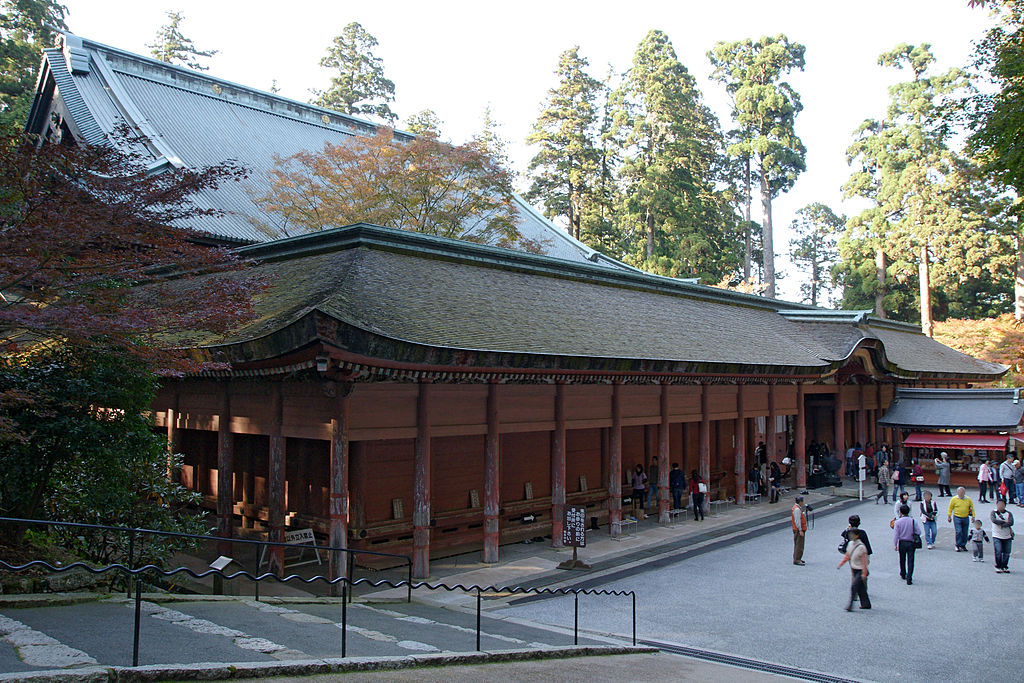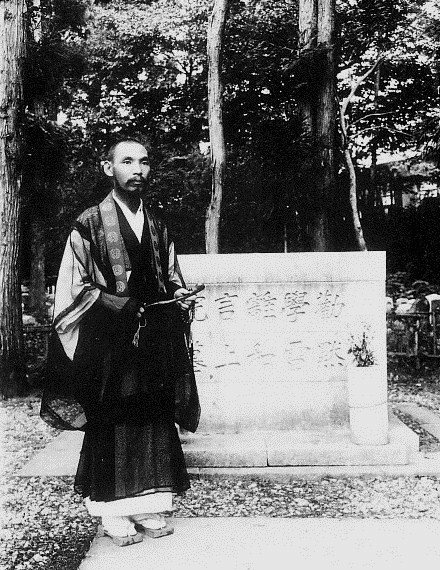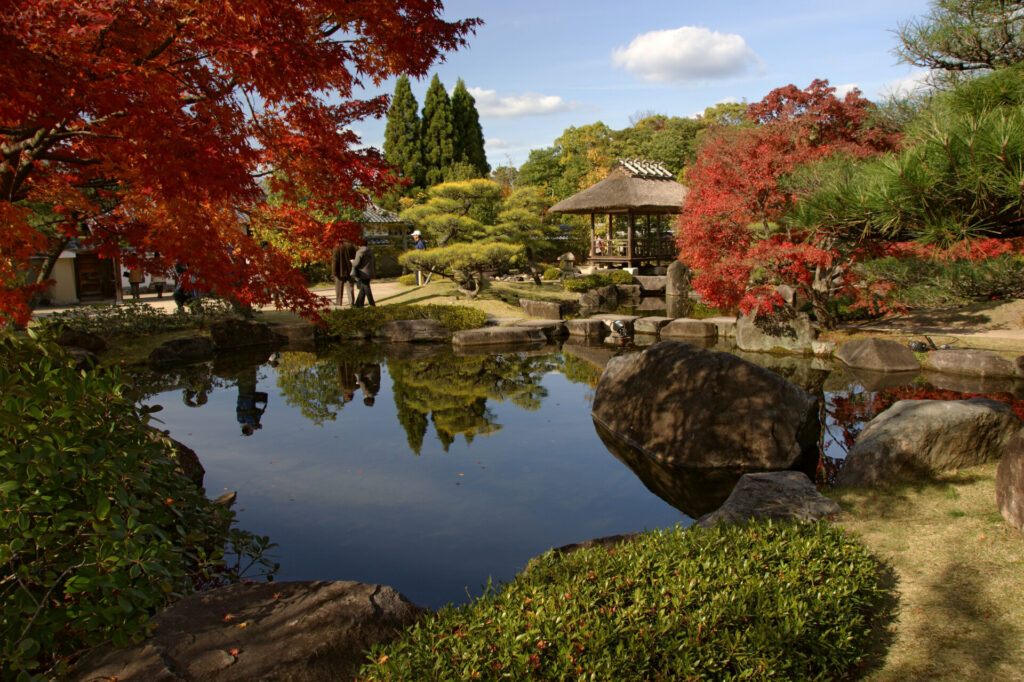
Kukai was the first Japanese Buddhist master to engage seriously the concept of original enlightenment (hongaku). Saicho himself did not develop hongaku as a doctrinal category, but he was instrumental in bringing about a number of innovations that allowed hongaku to flourish in Tendai. In particular, the concept played a key role in his disciples’ efforts to integrate the Lotus Sutra with the recently introduced esoteric teachings. Talking about the schools that came into being in the Kamakura period, Jacqueline Stone confirms that “none of the founders of the new schools advocated an ‘acquired enlightenment’ model of gradual cultivation culminating in enlightenment. In that their teachings hold enlightenment or salvation to be accessed in the present moment inseparable from the act of faith or practice, all adopted an ‘original enlightenment’ orientation.” This is how she introduces the concept:

“In the early decades of the twentieth century, Buddhologist Shimaji Daito (1875-1927) introduced to the Japanese academic world a new interpretive category, which he called “original enlightenment thought” (Jap hongaku shiso). By this term he meant … these strands of Buddhist thought, most prominent in East Asia and especially in Japan, that regard enlightenment or the ideal state as inherent from the outset and as accessible in the present, rather than as the fruit of a long process of cultivation. More specifically, Shimaji used “original enlightenment thought” to designate the intellectual mainstream of medieval Japanese Tendai Buddhism. In this medieval Tendai context, “original enlightenment thought” denotes an array of doctrines and concepts associated with the proposition that all beings are enlightened inherently. Not only human beings, but ants and crickets, mountains and rivers, grasses and trees are all innately Buddhas. The Buddhas who appear in sutras … are merely provisional signs. The “real” Buddha is the ordinary worldling. Indeed, the whole phenomenal world is the primordially enlightened Tathagata. Seen in their true light, all forms of daily conduct, even one’s delusive thoughts, are, without transformation, the expressions of original enlightenment. Liberation is reimagined, not as the eradication of mental defilements or as achieving birth in a pure land after death, but as the insight, or even the faith, that one has been enlightened from the very beginning.”
The fact that we have been enlightened from the very beginning does not, however, mean that we do not need to practice. Stone writes: “Tendai original enlightenment thought has been widely understood by modern scholars as an absolute affirmation of the phenomenal world that in effect denied the necessity of Buddhist practice and legitimated evil conduct. And as a corollary, the new Kamakura Buddhist movements are said to have arisen, at least in part, as a corrective to this trend.” Stone does not agree with this view.
Compared with the concept of Buddha-nature as presented in the Tathagatagarbha movement, “Original enlightenment” is no longer simply a potential innate in deluded beings to be realized through cultivation and the eradication of defilements but the true status of all phenomena just as they are.”
In the minds of the scholar-monks who elaborated the concept, “original enlightenment entailed a metaphysical premise about concrete phenomena instantiating ultimate reality, which exists nowhere apart from them.” If we can only access ultimate reality through phenomena, new practices using “forms” such as mantra chanting and visualisations, could be designed to “actualise” our original enlightened nature. Stone talks of a “reimagining of liberation “ in nonlinear terms as accessible in the present moment and in one’s immediate circumstances.”
“Hongaku thought has been called a doctrine of “absolute affirmation” in that all phenomena, including one’s most ordinary acts and deluded thoughts, just as they are, are seen as the expressions of original enlightenment. However, this statement requires some qualifications. Being committed to a nondual position, hongaku rhetoric strives to collapse any tension … between the visible phenomena of this world and ultimate reality, or between the Buddha’s enlightenment and the state of ordinary worldlings. But a close reading of texts suggests that such statements as “the defilements are none other than enlightened insight” are articulated from the standpoint of having realized nonduality, not that of having yet to realize it … It is only from the standpoint of this nondual insight that the hongaku doctrine may be accurately characterized as “absolute affirmation.”
“Failure to grasp this qualification has led to the questionable assumption that original Enlightenment thought, in its “absolute affirmation” of the enlightenment of ordinary worldlings just as they are, in effect denies the need for practice. This charge should now be laid to rest. Tendai kuden transmissions make clear that statements about “nothing to practice and nothing to achieve” were to convey some sense of what an enlightened person is supposed to see, or to repudiate purely functional understandings of practice as a means to an end – not to deny its necessity. Because original enlightenment is seen as the true status of all phenomena, practice cannot be the “cause” of enlightenment.” Medieval Tendai monks have indeed engaged in diverse forms of religious practice.
Stone also notes that the “absolute affirmation” of hongaku thought “was not used explicitly to endorse the structure of social hierarchy, the system of rule, or the value of accepting one’s lot.” Neither did it endorse wrongdoing. Instead, as Tamura Yoshiro has noted, “When interpreted with a mind ready to understand its meaning, we can state that the thesis that ‘the common worldling is the essential Buddha’ has uncovered a deep value in the condition of being a common worldling, who in pain and sorrow struggles to live through factual reality.”
“Since Tendai hongaku thought does not deny the necessity of Buddhist practice, the new Kamakura schools cannot accurately be characterized as a counter movement to revive it. This notion, too, should be allowed to lapse permanently.” In fact, it is because it has become widely accepted that enlightenment had to be “actualised” rather than “achieved,” through cutting off attachments that Pure Land, Zen and Nichiren schools were led to focus on practices such as mantras or shikantaza. Such practices were meant to trigger an experience of inner contentment and peace that no acquired “thing” could match. Rather than expecting ethics to lead to enlightenment, insights into experiences of enlightenment was relied upon to achieve ethics, and allow an embodiment of the enlightened mind.
Stone feels that, as both academics and practitioners in the West have almost exclusively focused on the new schools of the Kamakura period, they have failed to appreciate the profound formative influence of the Heian period. “The hongaku discourse flourished for some six hundred years, from the Heian through the mid-Togukawa periods.” “All the significant features of hongaku discourse – the direct accessibility of Buddhahood, the concern for people of limited capacity, the “shortening of the path,” the equation of worldly phenomena with Buddhist truth, the weakening of the causal links between moral conduct and liberation – can be traced to the Heian period … In one sense, it is still with us, for the doctrinal orthodoxy of many Japanese Buddhist traditions today retains a hongaku orientation in holding that liberation is accessed in the act of practice.”
And I would add that it has also shaped the thought of Kyoto School philosophers such as Nishitani Keiji when he wrote: “The double negation of things and self results in a restoration of both things and self on the field of emptiness, which could be called “the field of ‘be-ification’ or, in Nietzschean terms, the field of the Great Affirmation, where we can say Yes to all things.”
Source:
Jacqueline I. Stone – Original Enlightenment and the Transformation of Medieval Japanese Buddhism

